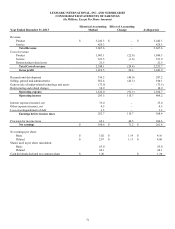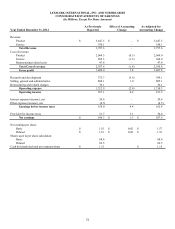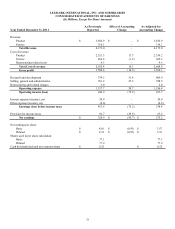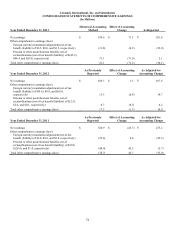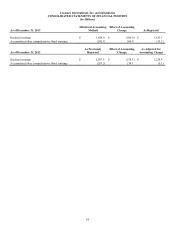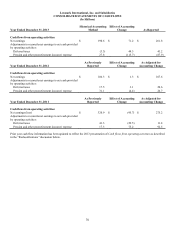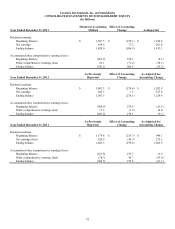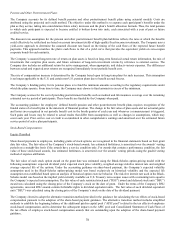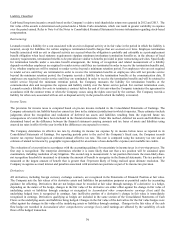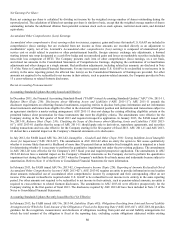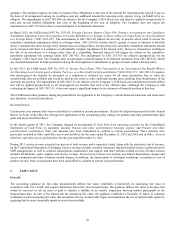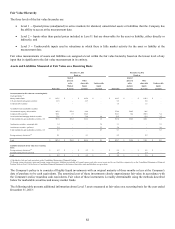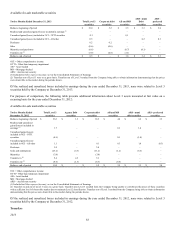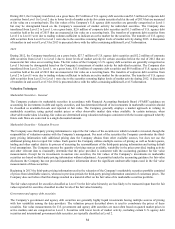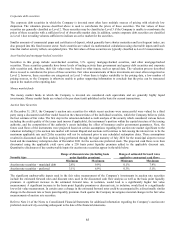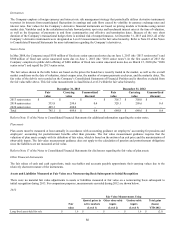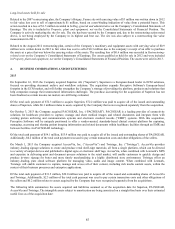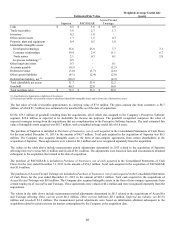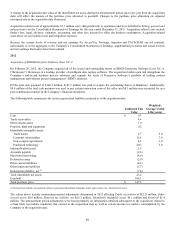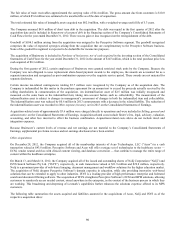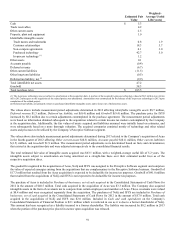Lexmark 2013 Annual Report Download - page 85
Download and view the complete annual report
Please find page 85 of the 2013 Lexmark annual report below. You can navigate through the pages in the report by either clicking on the pages listed below, or by using the keyword search tool below to find specific information within the annual report.
guidance. The guidance requires an entity to measure those obligations as the sum of the amount the reporting entity agreed to pay on
the basis of its arrangement among its co-obligors and any additional amount the reporting entity expects to pay on behalf of its co-
obligors. The amendments in ASU 2013-04 are effective for the Company’s 2014 fiscal year and must be applied retrospectively to
joint and several liability obligations that exist at the beginning of the year of adoption. The Company does not expect the
amendments in ASU 2013-04 to have a material impact to its financial statements.
In March 2013, the FASB issued ASU No. 2013-05, Foreign Currency Matters (Topic 830): Parent’s Accounting for the Cumulative
Translation Adjustment Upon Derecognition of Certain Subsidiaries or Groups of Assets within a Foreign Entity or of an Investment
in a Foreign Entity (“ASU 2013-05”). The amendments in ASU 2013-05 address the diversity in practice about when to release the
cumulative translation adjustment related to a foreign entity. ASU 2013-05 clarifies that if a group of assets or business is sold that
doesn’t constitute the entire foreign entity (transactions occurring within a foreign entity) the cumulative translation adjustment should
not be released until there is a complete or substantially complete liquidation of the foreign entity. However, transactions resulting in
the sale of an investment in a foreign entity (loss of a controlling financial interest) will trigger the release of the cumulative
translation adjustment into earnings under ASU 2013-05. The amendments in ASU 2013-05 are effective prospectively for the
Company’s 2014 fiscal year. The Company does not anticipate a material impact to its financial statements from ASU 2013-05, absent
any material transactions in future periods involving the derecognition of subsidiaries or groups of assets within a foreign entity.
In July 2013, the FASB issued ASU No. 2013-11, Income Taxes (Topic 740): Presentation of an Unrecognized Tax Benefit When a
Net Operating Loss Carryforward, a Similar Tax Loss, or a Tax Credit Carryforward Exists (“ASU 2013-11”). ASU 2013-11 requires
that unrecognized tax benefits be presented as a reduction to deferred tax assets for all same jurisdiction loss or other tax
carryforwards that are available and would be used by the entity to settle additional income taxes resulting from disallowance of the
uncertain tax position. The amendments in ASU 2013-11 are effective for the Company’s 2014 fiscal year (and interim periods within)
and will be applied prospectively to all unrecognized tax benefits that exist at the effective date. Although the Company is still
evaluating the impact of ASU 2013-11, it does not expect a significant impact to its statement of financial position at this time.
The FASB issued other guidance during the period that is not applicable to the Company’s current financial statements and disclosures
and, therefore, is not discussed above.
Reclassifications:
Certain prior year amounts have been reclassified to conform to current presentation. Results for all periods presented in this Annual
Report on Form 10-K reflect the retrospective application of the accounting policy change for pension and other postretirement plan
gains and losses described above.
In the fourth quarter of 2013, the Company changed its presentation of Cash flows from operating activities on the Consolidated
Statements of Cash Flows to separately disclose Pension and other postretirement (income) expense and Pension and other
postretirement contributions. Prior year amounts have been reclassified to conform to current presentation. These amounts were
previously included in Other and Other assets and liabilities for the years ended December 31, 2013 and 2012 and in Other, Accrued
liabilities, and Other assets and liabilities for the year ended December 31, 2011.
During 2013, service revenue exceeded ten percent of total revenue and is separately stated, along with the associated cost of revenue,
on the Consolidated Statements of Earnings. Service revenue includes extended warranties and professional services performed under
MPS arrangements, as well as software subscriptions, maintenance and support, and other software-related services. Product revenue
includes all hardware, parts, supplies and license revenue. Restructuring-related costs include accelerated depreciation charges and
excess component and other inventory-related charges. In addition, the amortization of developed technology is included as cost of
product revenue. Prior year amounts have been reclassified to conform to current year presentation.
3. FAIR VALUE
General
The accounting guidance for fair value measurements defines fair value, establishes a framework for measuring fair value in
accordance with U.S. GAAP, and requires disclosures about fair value measurements. The guidance defines fair value as the price that
would be received to sell an asset or paid to transfer a liability in an orderly transaction between market participants at the
measurement date. As part of the framework for measuring fair value, the guidance establishes a hierarchy of inputs to valuation
techniques used in measuring fair value that maximizes the use of observable inputs and minimizes the use of unobservable inputs by
requiring that the most observable inputs be used when available.
81


